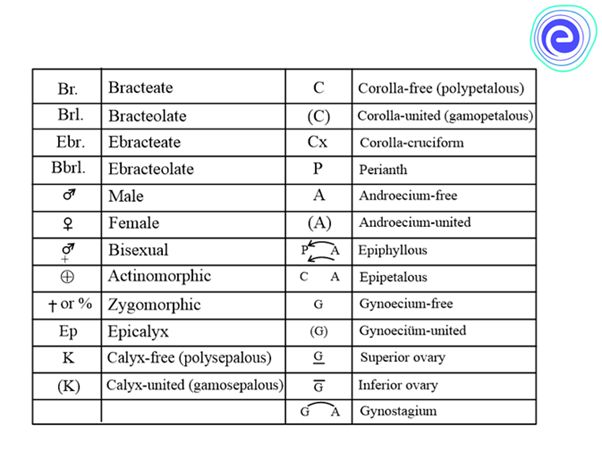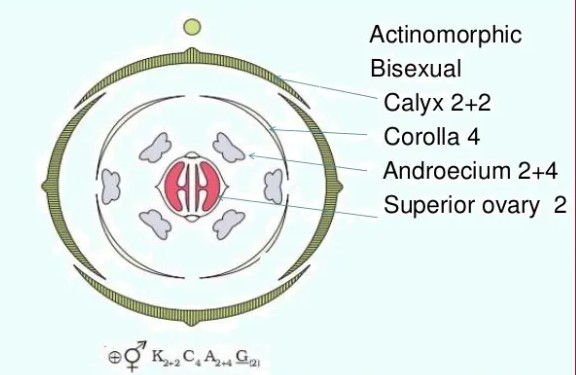- Books Name
- ACME SMART COACHING Biology Book
- Publication
- ACME SMART PUBLICATION
- Course
- CBSE Class 11
- Subject
- Biology
SEMI-TECHNICAL DESCRIPTION OF A TYPICAL ANGIOSPERMIC PLANT
Different characteristics of a family are the diagnotistic features which enable us to differentiate them.
These diagnostic features are mainly based on floral characters like sexuality of flowers, symmetry of flowers, position of ovary with respect to floral whorls, bracts, and conditions of calyx, corolla, androecium and gynoecium.
For a systematic study and quick comprehension of all the diagnostic features of a family, these characters are symbolised and put in the form of a floral formula.
Floral diagrams are also drawn which give some extra informations like placentation, position of the mother axis, aestivation etc.
Floral formulae and diagrams are given with the respective family descriptions later in the chapter.
Symbols used in Floral Formula
(1) Br : Bracteate flower
(2) Ebr : Ebracteate flower (bract absent)
(3) ![]() : Actinomorphic flower
: Actinomorphic flower
(4) % or + : Zygomorphic flower
(5) ![]()
 : Bisexual flower
: Bisexual flower
(6)![]()
 : Unisexual, male flower
: Unisexual, male flower
(7) 
![]() : Unisexual; female flower
: Unisexual; female flower
(8) K : Calyx
Kn : Polysepalous
K(n) : Gamosepalous
where n = Number of sepals
(9) Epi : Epicalyx (below sepals)
(10) C : Corolla
Cn : Polypetalous
C(n) : Gamopetalous
where n = Number of petals
(11) P : Perianth
(12) A : Androecium
![]() : Infinite stamens
: Infinite stamens
![]()
 : Epipetalous stamens
: Epipetalous stamens

![]() : Epitepalous or epiphyllous stamens
: Epitepalous or epiphyllous stamens
(13) G : Gynoecium
G(n) : Syncarpous ovary
Gn : Apocarpous ovary
Gn : Superior ovary

![]() : Inferior ovary
: Inferior ovary
where n = Number of carpels
(14) In the floral diagram the dot (•) represents the position of mother axis. It denotes the
posterior side of the flower.
Semi-Technical description of a typical flowering plant
A flowering plant is described using morphological characteristics.Vegetative elements such as roots, stems, and leaves are covered first in a semi-technical description of the flowering plant's behavior, followed by floral characters such as inflorescence and flower components.

Various symbols in a floral formula are given above. The description must be concise, written in plain, scientific language, and given in a logical order. The plant's habitatand vegetative characteristics (roots, stem, and leaves) are detailed first, followed by floral characters (inflorescence and flower components). A floral diagram is a visual representation of the structure of a flower. It depicts the number, arrangement, and fusion of floral organs. The flower's various components are represented by their respective symbols. Floral diagrams can be used to identify flowers or to better understand angiosperm evolution.The floral formula is a traditional way of describing a flower's structure. It designates different components of the flower with a combination of capital letters and symbols. A floral diagram and a floral formula are offered after discussing various elements of the plant. A floral diagram of a mustard plant is given below.


 ACME SMART PUBLICATION
ACME SMART PUBLICATION
